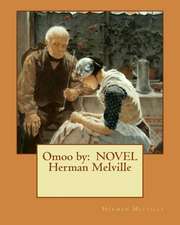Moby-Dick, Or, the Whale
Autor Herman Melvilleen Limba Engleză Hardback – 31 oct 2010
Preț: 359.98 lei
Nou
Puncte Express: 540
Preț estimativ în valută:
68.89€ • 71.51$ • 57.44£
68.89€ • 71.51$ • 57.44£
Carte tipărită la comandă
Livrare economică 25 martie-08 aprilie
Preluare comenzi: 021 569.72.76
Specificații
ISBN-13: 9781435758971
ISBN-10: 1435758978
Pagini: 664
Dimensiuni: 152 x 229 x 41 mm
Greutate: 1.05 kg
Editura: Lulu
ISBN-10: 1435758978
Pagini: 664
Dimensiuni: 152 x 229 x 41 mm
Greutate: 1.05 kg
Editura: Lulu
Notă biografică
Herman Melville (1819 - 1891) was an American novelist, short story writer and poet of the American Renaissance period. His best known works include Typee (1846), a romantic account of his experiences in Polynesian life and his whaling novel Moby-Dick (1851). His work was almost forgotten during his last thirty years. Herman Melville's writing draws on his experience at sea as a common sailor, exploration of literature and philosophy and engagement in the contradictions of American society in a period of rapid change. He developed a complex, baroque style: the vocabulary is rich and original, a strong sense of rhythm infuses the elaborate sentences, the imagery is often mystical or ironic and the abundance of allusion extends to scripture, myth, philosophy, literature and the visual arts.






















